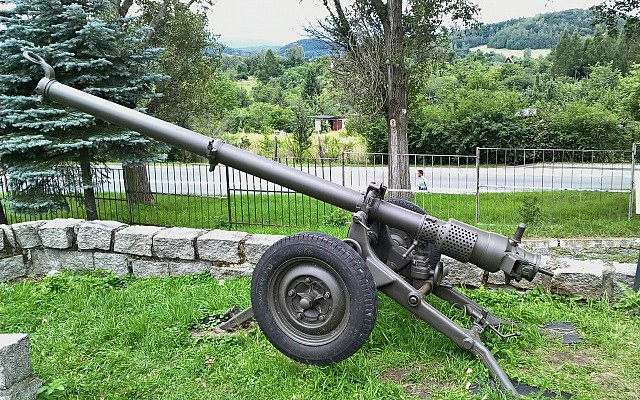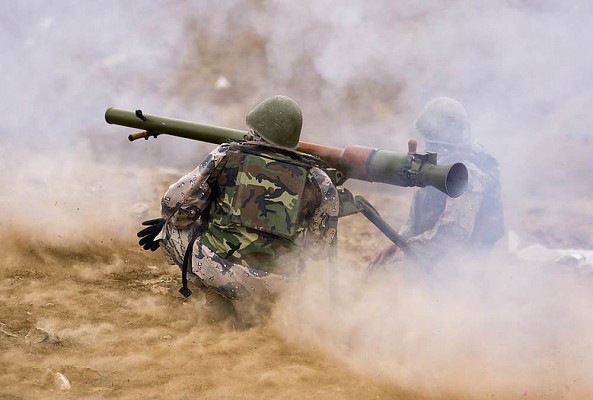82mm B-10
China: Type 65
Overview

B-10
Original Soviet B-10 in the Batey ha-Osef museum in Israel.
Source: Bukvoed -
© GNU Attribution - Share Alike license
China - Norinco
RG82 (East German service)
Type 65 (Chinese production)
China
Vietnam
Description
Introduction
The B-10 is an early Cold War era recoilless rifle of Soviet origin. It was developed in the early 1950's to replace the earlier SPG-82 rocket launcher in Soviet service. The B-10 was produced in large numbers for use with Soviet forces and their allies. Although it was soon inadequate against Western armor, the B-10 remained in use with many third world nations as a cheap an effective infantry support weapon.
Design
The B-10 is a recoilless rifle of a rather conventional design. It is a smoothbore weapon that is loaded from the rear, through a breech that swivels sideways. A basic optical sight is fitted on the left side of the weapon. The B-10 is fired from a collapsible tripod. An axle with two wheels is attached to the base of the tripod when in transit. Two grips near the muzzle are used to pull the weapon. At least two people are required to operate the weapon effectively. The Chinese Type 65 is a direct copy of the B-10, while the Type 65-I can be disassembled in two parts in order to be carried over longer distances.
Firepower
The B-10 fires mortar-like projectiles at a rate of fire of 6 to 7 rounds per minute. High explosive rounds are used against infantry and HEAT rounds against vehicles. The original and most common HEAT projectiles pierce 240mm RHA. The Chinese developed more effective rounds in the late 1970's that may pierce over 350mm RHA. The effective ant-tank range is 400 meters. The effective range of high explosive rounds is over 1 km against point targets, but may reach as far as 4.5 km using indirect fire.
Mobility
The B-10 can easily be pulled by hand over short distances. Over long distances it is to be moved by vehicle. Soviet forces often employed the B-10 from the BTR-50 armored personnel carrier. In many third world countries the B-10 has been fitted on a variety of jeeps and pickup trucks.
Users
The B-10 was widely employed with the Soviet forces since the mid 1950's until it was fully replaced in the 1970's. The B-10 was widely exported and used during most conflicts in the Middle East, Africa and Asia. China was also one of the main producers and users of this weapon. Nowadays the B-10 is considered obsolete but remains operational in limited numbers today, mostly with third world nations.
Details
Related articles

107mm B-11
The 82mm B-10 is a counterpart to the larger 107mm B-11. These recoilless rifles were introduced in the same year.
